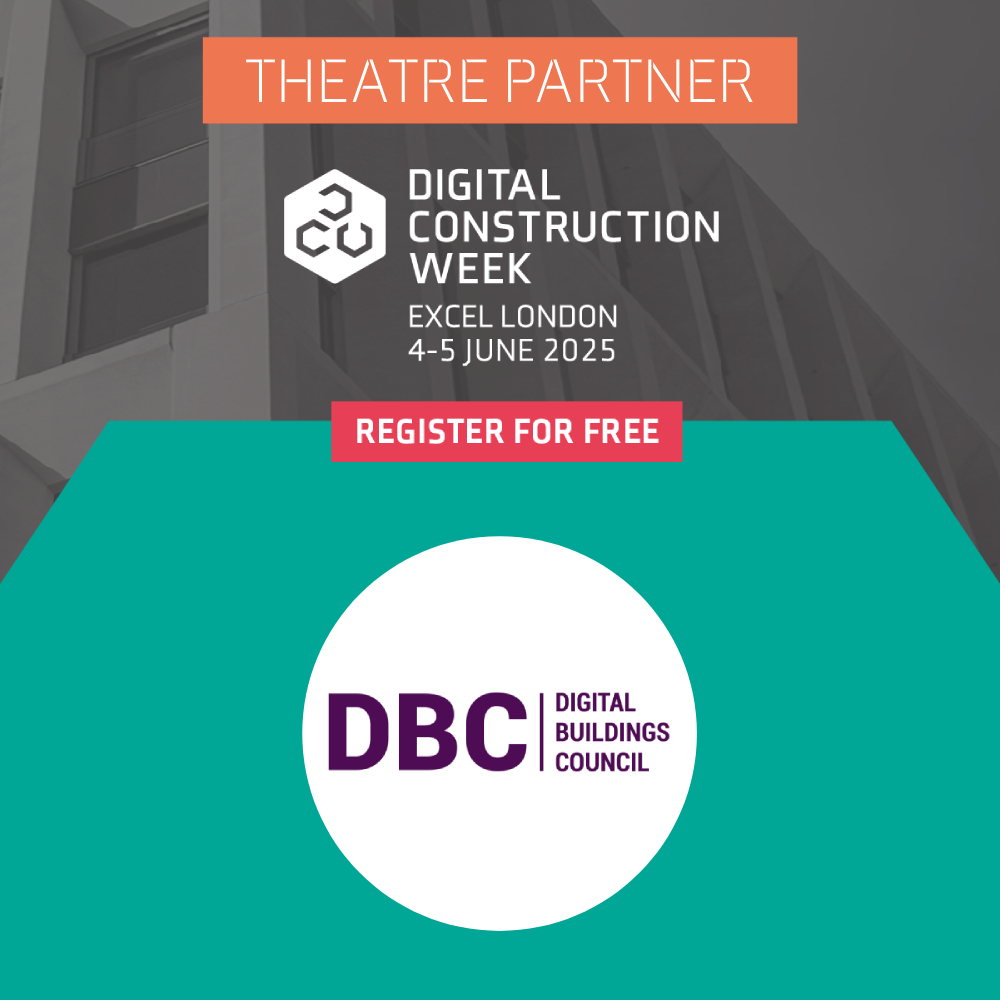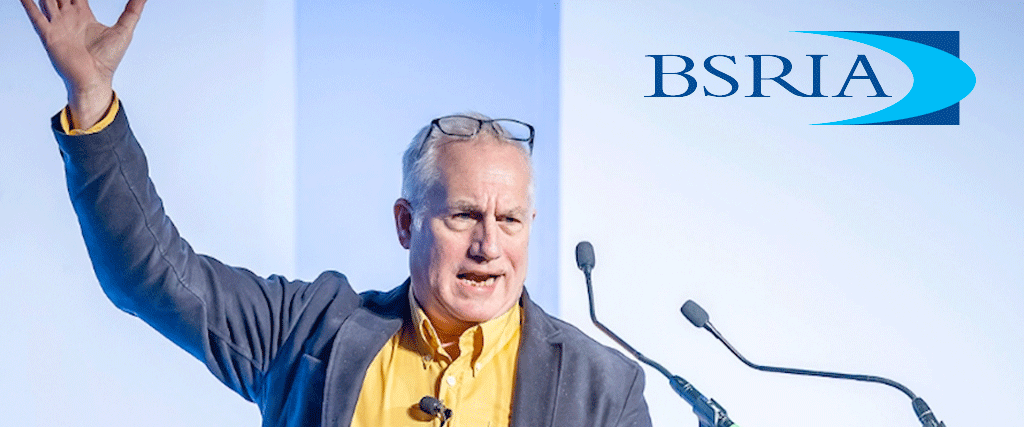
In late November our Executive Officer Justin Kirby kindly stepped in at the last minute to give a keynote at the retrofit-themed BSRIA Briefing this year. They have published the key takeaways from their summit you can read here, so we have put together this summary of the presentation Justin gave on our behalf.
Executive Summary:
Justin highlighted the challenges of digital building retrofits in achieving net-zero targets. He emphasised the need for improved data integration and interoperability across various building systems. Kirby also stressed the importance of bridging the gap between project design and operational management, advocating for the use of performance-based metrics and a standardised terminology for effective collaboration. The role of the DBC in facilitating this collaboration and driving industry best practices was also highlighted. Finally, the presentation proposes a “Digital Soft Landings” framework to improve the transition from design to operation, and how leveraging BIM models to create active digital twins could play a part in this.
Core Message: The presentation underscores the urgent need for digital transformation in the built environment, particularly in retrofitting existing buildings for energy efficiency and achieving net-zero goals.
Key Challenges & Opportunities:
- The Project-Operations Gap: A significant disconnect exists between the design & construction phase and the operational phase of buildings.
“Building users and facilities staff remain frustrated by the lack of influence and input they have over smart specifications defined during the design and planning phases by stakeholders that will walk away at practical completion, even though they ultimately run the building!”
- Data Silos: A lack of interoperability and data sharing between various building systems and stakeholders hinders optimisation and automation.
“It’s about how do you get the data from all these different operational technology devices, whether that’s your fire system, your security or your HVAC, into the cloud and into platforms, so you can analyze that data, optimize performance and automate those technologies to drive savings, etc.”
- Terminology Ambiguity: Lack of consistent definitions for key terms like retrofit, refurbishment, and fit-out creates confusion and impedes effective communication and collaboration.
“I think one of the things we really need to do first is like tackle the terminology… there is no clear kind of definitions around cat A plus or cat A or cat P fit out, et cetera for retrofit. So just as a very simple starting place, if we could get some common agreement about those terminologies, you know, about the terminologies, because that will help with alignment around, you know, effective communication about what it is that we’re talking about.”
- Skills Gap: A lack of skilled personnel to manage and operate smart building technologies presents a major obstacle to digital adoption and efficiency gains.
- Unlocking Investment Beyond Energy Efficiency: The focus on building performance needs to expand beyond just energy efficiency to encompass occupant well-being and user experience to attract investment.
“But interestingly… the people from the International World Buildings Institute pointed out there’s a difference between what is efficient buildings and what are effective buildings. Because post-COVID if a building is not occupied it is neither sustainable or effective.”
Potential Solutions:
- Early Stakeholder Engagement: Involving all stakeholders, including building users and facility managers, from the outset of a project is crucial. RIBA’s Smart Building Overlay to the RIBA Plan of Works is a positive step in this direction.
“The Smart Building Overlay for the RIBA Plan of Work advocates for the early engagement of key stakeholders into the design and construction process.”
- Performance-based Metrics: Metrics like NABERS can drive meaningful improvements in building performance by connecting design and operations.
“Performance-based metrics like NABERS can help drive meaningful improvements in building performance and potentially help plug the project-operations gap.”
- Digital Soft Landings Framework: Developing a framework specifically focused on the digital handover and operational phase of buildings could bridge the gap between project and operations.
- Active Digital Twins: Transitioning from passive BIM models to active digital twins that are continuously updated with real-time data will unlock potential for optimisation, predictive maintenance, and demonstrating ROI.
“The other thing is they never kept up to date. So unless those BIM models are kept up to date so that they can transition from being this passive digital twin into this active or performance digital twin, we are not going to get those energy efficiencies that we were talking about before.”
- Collaboration and Knowledge Sharing: Enhanced collaboration among industry bodies, rating organisations, and technology providers is essential to establish common standards, best practices, and tackle the skills gap.
Call to Action: The presentation concludes with a call for industry-wide collaboration to address these challenges and unlock the potential of digital transformation in achieving a net-zero built environment. This includes:
- Developing a shared understanding of key industry terminology.
- Exploring the development of a digital soft landings framework.
- Promoting the use of performance-based metrics and active digital twins.
Conclusion: The digital retrofitting challenge is multifaceted and requires a holistic approach. By focusing on closing the project-operations gap, leveraging data-driven insights, and fostering collaboration, the industry can unlock significant opportunities for energy efficiency, occupant well-being, and sustainable building operations.
We have included the Slide overview below but Justin has been publishing a series of posts on LinkedIn that explores these themes and other takeaways from his outreach this year that also form part of his role as the Executive Officer of the DBC. You can read an AI-generated text summary of the series with links to all the original here. He has also published a 2 part AI-generated podcast summarising the posts that you can listen to at links below:

I. Introduction
- Brief overview of the presentation’s focus on the digital aspects of retrofitting, particularly in commercial real estate.
- Emphasis on the shift from “why” to “how” in smart building implementation.
II. The Importance of Digital in Retrofitting
- Slide 1: Smart is becoming BAU, so not about the Why now but the How: This section introduces the concept of the “smart building tech stack” and its role in analyzing data, optimizing performance, and automating building technologies.

- Slide 2: Why the DBC exists: This section highlights the blurring of traditional industry silos due to digital transformation and the DBC’s role in bridging these gaps across the built environment ecosystem.

- Slide 3: Who we are?: This section introduces the DBC’s founding members and showcases their experience in various smart building projects, including retrofits.

III. The Retrofit Challenge
- Slide 4: What we do: This section outlines the DBC’s approach to plugging gaps in existing frameworks and driving best practices in digital buildings, focusing on practical guidance and demonstrating the business case for smart building technologies.
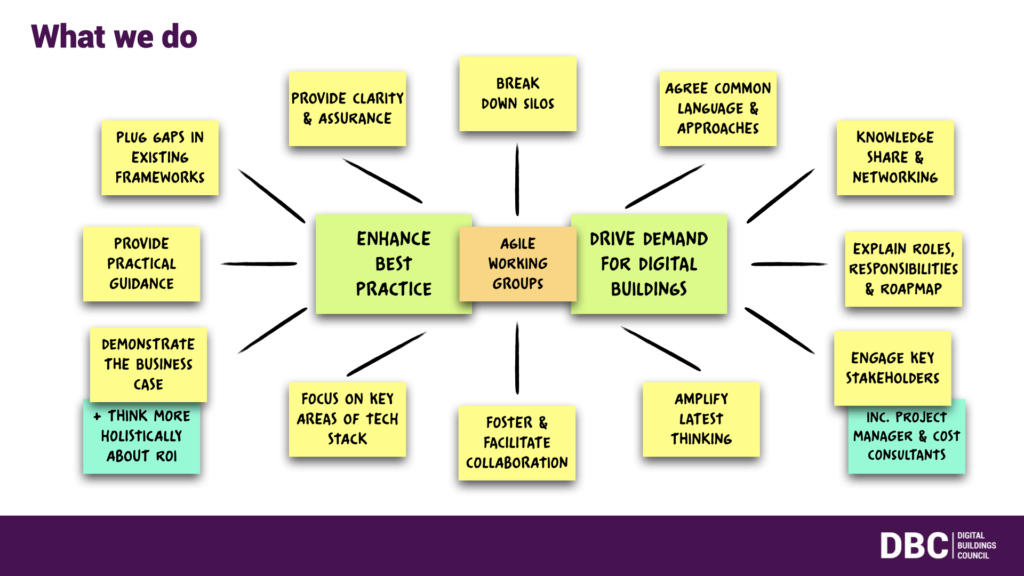
- Slide 5: Two obligatory stats for retrofitting and drive towards net zero: This section presents two key statistics that underline the urgent need for retrofitting: buildings’ significant contribution to global CO2 emissions and the high proportion of existing buildings that will remain in use in 2050.

- Slide 6: The retrofitting and drive to net zero challenge: This section highlights the disparity between current energy consumption in commercial buildings and the targets for net-zero, emphasizing the substantial work required to achieve these goals.

- Slide 7: Energy usage in typical commercial buildings: This section breaks down energy consumption in commercial buildings, revealing the major areas for potential improvement through digital solutions.

IV. Leveraging Digital Solutions for Effective Retrofitting
- Slide 8: Smart enablement for low hanging fruit: This section advocates for utilizing smart building technologies to achieve significant carbon reductions through optimization, particularly in HVAC systems.

- Slide 9: Joining some smart retrofitting collaboration dots: This section calls for increased collaboration across the industry, highlighting potential partners for achieving impactful results.

- Slide 10: Prioritising early engagement “Smart from the Start” is a good start: This section emphasizes the importance of early stakeholder engagement in the design and construction process to effectively integrate smart building considerations.

V. Bridging the Gap Between Project and Operations
- Slide 11: But the overarching challenge is still the ‘Project-Operations Gap’: This section identifies the disconnect between project and operations as a significant challenge, highlighting the frustration of building users and facilities staff with technology decisions made without their input.

- Slide 12: Can the power of performance-based metrics help plug the gap?: This section explores the potential of performance-based metrics, such as NABERS, to bridge the project-operations gap by driving design and technology choices that align with performance criteria.
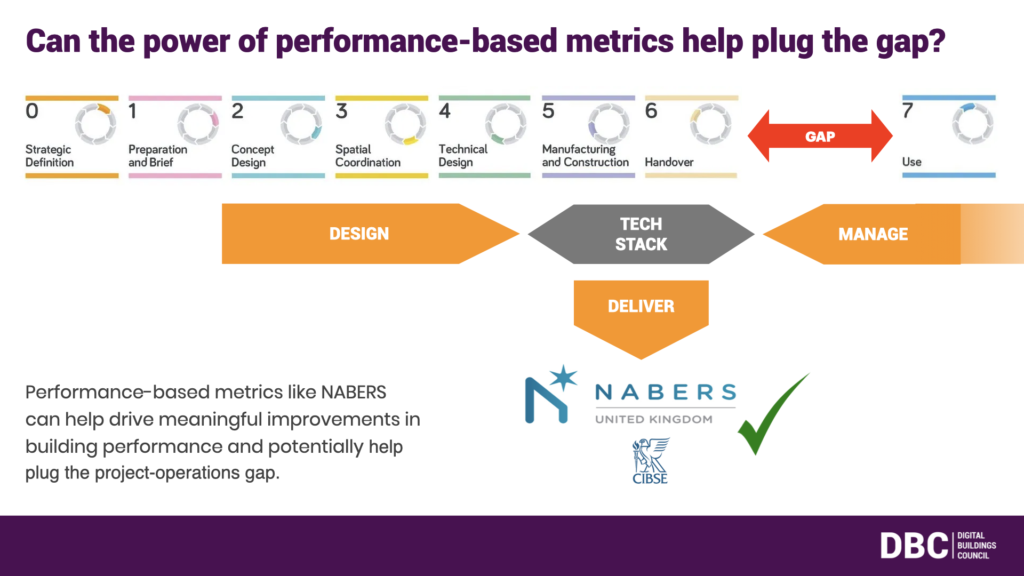
VI. Moving Beyond Energy Efficiency
- Slide 13: But unlocking investment goes beyond just energy efficiency: This section argues that a holistic approach to retrofitting is crucial, considering both efficiency and effectiveness, including factors like health and well-being, to attract investment and encourage building occupancy.

VII. Proposed Framework and Actionable Steps
- Slide 14: Could a ‘Digital Soft Landings’ framework be a catalyst for change?: This section proposes the development of a “digital soft landings” framework as a collaborative effort to improve the transition from project to operations and ensure the long-term effectiveness of smart building technologies.

- Slide 15: Linking BIM to smart enablement is a tangible wow.: This section highlights the potential of transitioning from passive BIM models to active digital twins to optimize building performance and realize the full potential of smart technologies.
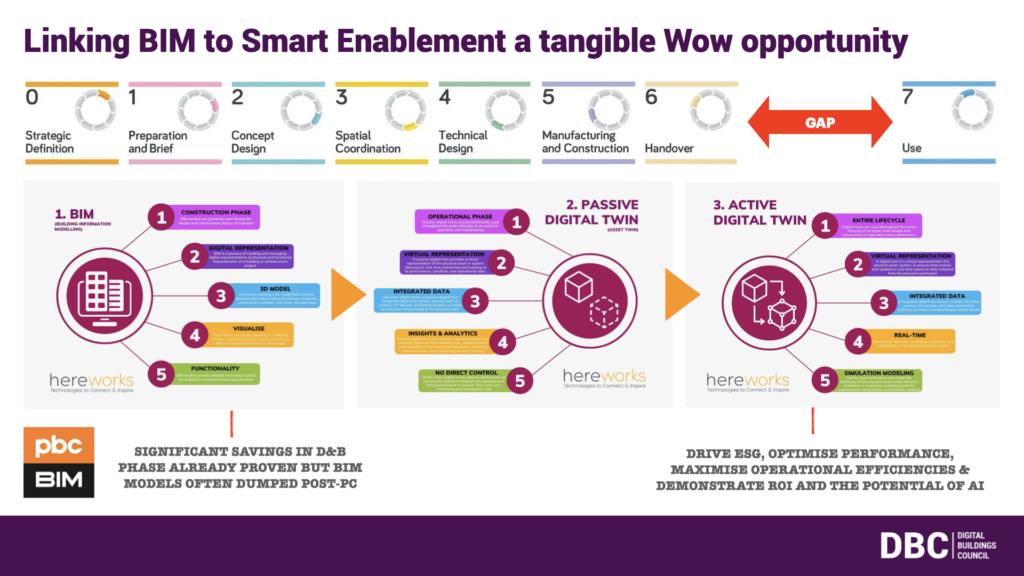
- Slide 16: But let’s tackle the terminology ambiguity in retrofit first: This section underscores the need for aligning industry terminology around concepts like retrofit, refurbishment, and fit-out to facilitate effective communication and collaboration.
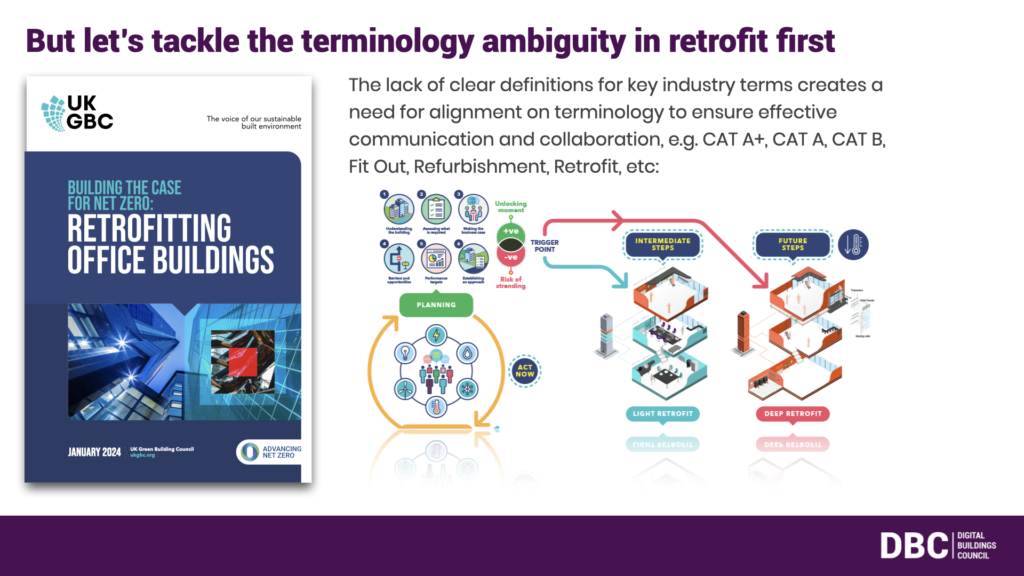
VIII. Conclusion
- Reiterates the call for collaboration and action to address the challenges and opportunities presented by digital retrofitting.
- Offers to share presentation materials and further engage in discussions with attendees.
That’s it for 2024, but can read more summaries of our ongoing engagement activities in our News & Views section and will be publishing more next year. In the meantime, stay connected by following the DBC on LinkedIn for the latest updates, events and insights from the founding members and reach out to learn how to join our community and contribute to our mission.

